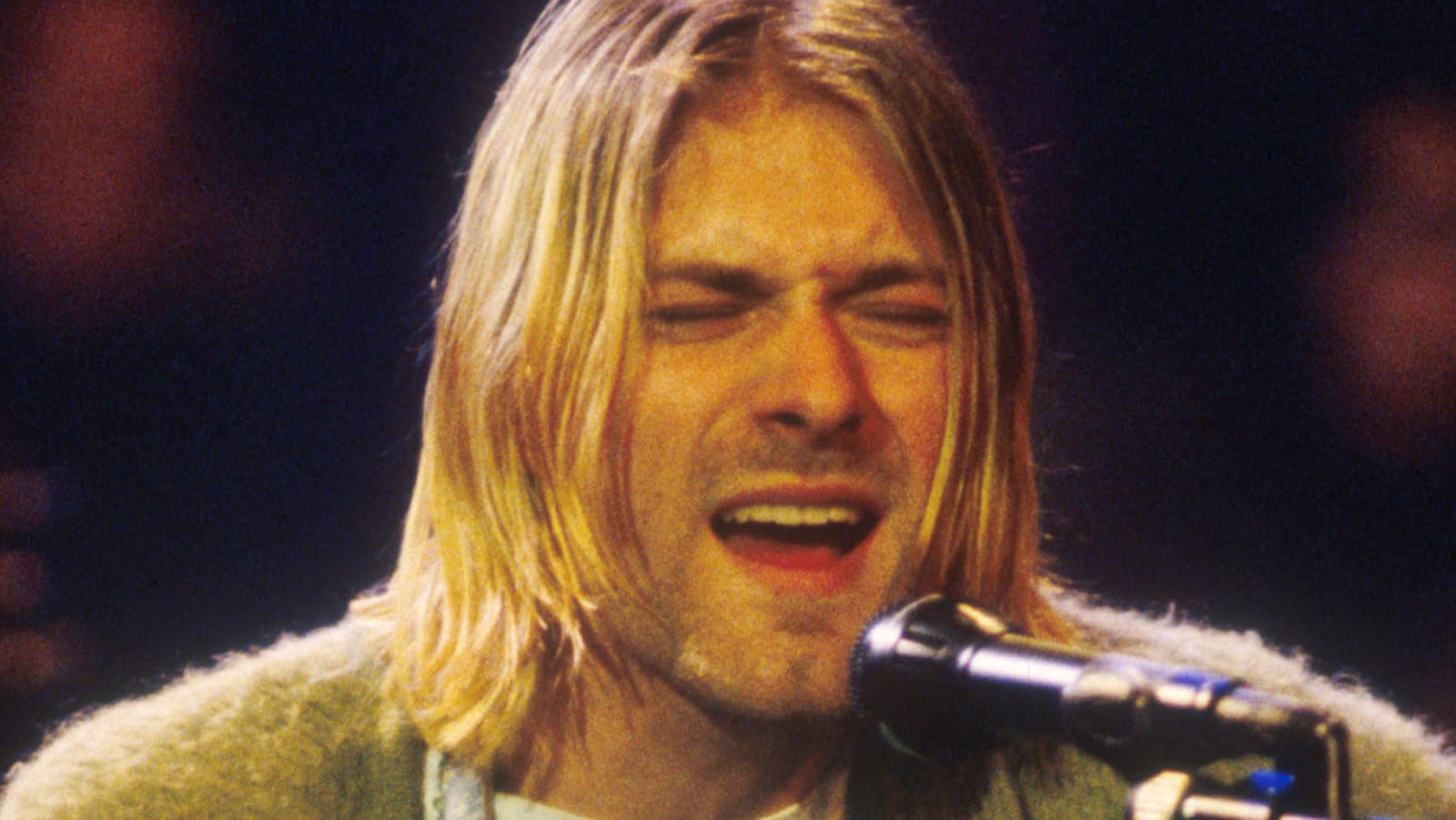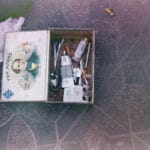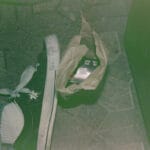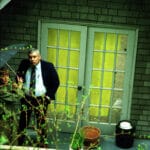Unveiling Cobain: The Evolution of an Icon Through Photography
Kurt Cobain’s image—the messy blonde hair, the striped shirts, the fuzzy green cardigan—is forever etched in our collective memory. His photographs are arguably as iconic as his music, transcending the typical rockstar portrait to offer glimpses into his complex character: the vulnerability, the internal struggles, and the raw, undeniable talent.
One photoshoot, in particular, continues to haunt fans—Jesse Frohman’s session on July 23rd, 1993. Taken just months before Cobain’s death, these images are stark and unsettling. Cobain appears gaunt, almost spectral, his gaze suggesting a weariness that was more than physical. These photos are undeniably difficult to observe, yet impossible to turn away from; they capture the heartbreaking reality of a life seemingly consumed by fame and inner demons.
But Cobain’s story, as told through images, is not just one of decline. Examining his photographic history reveals a compelling evolution. Early photos of Nirvana pulsate with raw energy, capturing the band’s youthful exuberance as they ignited the grunge movement. They are snapshots of a band on the rise, teeming with life and a palpable hunger to conquer the world.
As Nirvana ascended to global stardom, a shift occurred in Cobain’s demeanor, a change reflected in his photographs. The once-bright smiles seemed to fade, replaced by a palpable exhaustion and unease. Some might interpret this as discomfort, as if the weight of expectation and the relentless scrutiny of fame had become an almost physical burden.
One constant, however, binds these disparate images together: Cobain’s profound connection to his music. Whether captured onstage, lost in the throes of performance, or sharing a lighthearted moment with bandmates, his eyes betray a unique spark, a testament to the solace and joy he found in music.
Beyond the stage and the glare of the spotlight, candid photos reveal another dimension of Cobain: the man behind the music. Images of him with his daughter, Frances Bean, radiate a tenderness and love that contradicted the often harsh, angst-ridden persona projected in the media. These intimate glimpses remind us that beneath the grunge icon resided a complex individual with a capacity for deep love and affection.
The legacy of Kurt Cobain is complex and, in many ways, still unfolding. His photos serve as cultural artifacts, continuing to spark debate and introspection. They challenge us to confront uncomfortable truths about fame, mental health, and the often-unbearable pressure placed upon those who give voice to a generation’s anxieties. Perhaps most importantly, they remind us of the power and importance of vulnerability.
In a world obsessed with curated perfection, Cobain’s photos stand as a powerful counterpoint. They encourage us to embrace our imperfections, to find beauty in authenticity, and to recognize that the cracks in our facades often reveal our most human and endearing qualities.
Deciphering Cobain’s Style: A Rebellion Against the Mainstream
Labeling Kurt Cobain’s style as simply “grunge” feels like an oversimplification. While he was undoubtedly a pivotal figure in the grunge movement, his approach to fashion transcended mere trends. It was a statement, a visual rejection of the polished, often-inauthentic aesthetics prevalent in the late 80s and early 90s.
Cobain’s style was about comfort and practicality over everything else. He favored ripped jeans, oversized sweaters that might have been plucked from a thrift store, and those now-iconic flannel shirts—often layered or worn open. His look screamed rebellion, a deliberate middle finger to the meticulously crafted images of pop stars of the era.
This commitment to authenticity extended beyond his clothing choices. Cobain’s unkempt hair, often dyed in unconventional colors, became a signature element of his anti-fashion approach. His penchant for oval-shaped sunglasses (most famously, Christian Roth) further solidified his image as someone who marched to the beat of his own drummer.
Here’s what truly set Cobain’s style apart:
- It was a rejection of consumerism. He embraced thrifting, patching up old clothes, and customizing pieces to create a uniquely personal style long before “DIY fashion” became trendy.
- It celebrated individuality. Cobain’s message was clear: wear what you want, not what others tell you to wear. This resonated deeply with a generation yearning for authenticity and self-expression.
- It was genuinely him. Cobain wasn’t trying to impress anyone. His style was an extension of his personality, his anxieties, and his disdain for conformity.
Even today, Cobain’s style continues to inspire designers and individuals alike. His influence can be seen in everything from high-fashion runways to streetwear trends. His legacy reminds us that true style is timeless—a reflection of our inner selves rather than fleeting trends.
Capturing Cobain: The Photographers Who Defined His Image
The photos of Kurt Cobain, frozen moments in time that capture both his charisma and his vulnerability, are inextricably linked to the photographers who pointed their lenses at him.
The Haunting Finality of Jesse Frohman
Jesse Frohman’s name is forever linked to Cobain’s legacy, often in hushed and somber tones. Commissioned by the London Observer’s Sunday Magazine to photograph Nirvana for their In Utero album promotion, Frohman captured Cobain in New York City on July 27, 1993. The resulting images, now known as “The Last Session,” are as captivating as they are unsettling.
Cobain, arriving hours late and requesting a bucket (possibly due to illness), appears fragile and world-weary in the photos. His gaze is distant, his posture suggesting a deep exhaustion. These photos, later published by Frohman in a book also titled Kurt Cobain: The Last Session (2014), have become the subject of much analysis. Some experts suggest they offer a raw and unfiltered glimpse into Cobain’s state of mind during his final months, a visual manifestation of his well-documented struggles.
Youri Lenquette: Glimpsing the Man Beyond the Myth
While Frohman’s photos are undeniably poignant, French photographer Youri Lenquette’s work offers a contrasting perspective on Cobain. Lenquette’s images are less about the carefully constructed persona of a rock icon and more about capturing the unguarded moments, the in-between spaces where Cobain’s true self shines through.
In Lenquette’s photos, we see Cobain interacting with fans, lost in the rapture of a live performance, or simply existing as a regular person—a stark contrast to Frohman’s more stylized and melancholic portraits. These glimpses into Cobain’s everyday life serve as a reminder that behind the grunge icon was a multifaceted individual.
Adding to the intrigue surrounding Lenquette’s work is the lack of detailed information available about his specific collaborations with Cobain. This air of mystery only enhances the power of his photos, leaving us to wonder about the circumstances surrounding their creation and the stories they hold.
Piecing Together the Puzzle: A Kaleidoscope of Images
Frohman and Lenquette are just two of the many photographers who aimed their lenses at Cobain during his brief but impactful time in the spotlight. Countless concert photographers, journalists documenting the grunge explosion, and friends capturing candid moments have all contributed to the vast archive of Cobain imagery that exists today. Each photo, like a piece of a puzzle, helps paint a more complete and nuanced picture of the enigmatic artist.
The exploration of who photographed Kurt Cobain extends beyond names and dates; it’s about understanding the profound impact of photography in shaping public perception and preserving legacy. These images allow us to connect with Cobain on a human level, to see past the myths and the carefully constructed personas, and to recognize the complex individual who grappled with fame, addiction, and the challenges of living a life under constant scrutiny.
Courtney Love’s Whereabouts When Kurt Cobain Died: Unraveling a Persistent Mystery
The tragic circumstances surrounding Kurt Cobain’s death in Seattle on April 5th, 1994, have been the subject of endless speculation, fueled in part by the fact that his wife, Courtney Love, was miles away in Los Angeles at the time.
Cobain and Love’s relationship was notoriously turbulent, marked by both passionate highs and tumultuous lows. Both struggled with substance abuse, which undoubtedly strained their marriage. This context, coupled with Love’s physical distance from Cobain in his final days, has led to persistent questions and conspiracy theories about her potential involvement in his death.
Understanding the timeline of those final weeks is crucial to unraveling the mystery:
- March 1994: Following an intervention, Cobain agreed to enter rehab in Los Angeles.
- March 30, 1994: Love traveled to LA to be closer to Cobain during his treatment.
- April 1, 1994: Cobain left rehab against medical advice and flew back to Seattle. Accounts of Love’s location on this date are conflicting. Some sources place her still in LA, while others suggest she may have briefly returned to Seattle.
- April 5, 1994: Cobain was found dead in his Seattle home.
Love has consistently denied any involvement in Cobain’s death, and the official investigation ruled it a suicide. However, the circumstances, coupled with the couple’s highly publicized struggles, have provided fertile ground for speculation. Theories range from Love’s potential involvement in a cover-up to more elaborate scenarios involving outside forces.
It’s important to note that none of these theories have been substantiated. They often rely on conjecture, circumstantial evidence, and a disregard for the official findings. While the desire to find answers and make sense of such a tragic loss is understandable, it’s crucial to approach these theories with a critical eye, separating speculation from evidence-based conclusions.
The enduring fascination with Love’s whereabouts when Cobain died speaks to the enduring power of their story—a tale of love, loss, addiction, and the often-destructive nature of fame. While we may never know the full truth of what transpired in those final days, the questions and the ongoing debate serve as a reminder of the fragility of life, the complexities of human relationships, and the enduring mystery that often shrouds the deaths of cultural icons.
Remember: You can find more in-depth information about the investigation and the evidence surrounding Cobain’s death in our exclusive reports on the Kurt Cobain crime scene and Kurt Cobain death pics.









